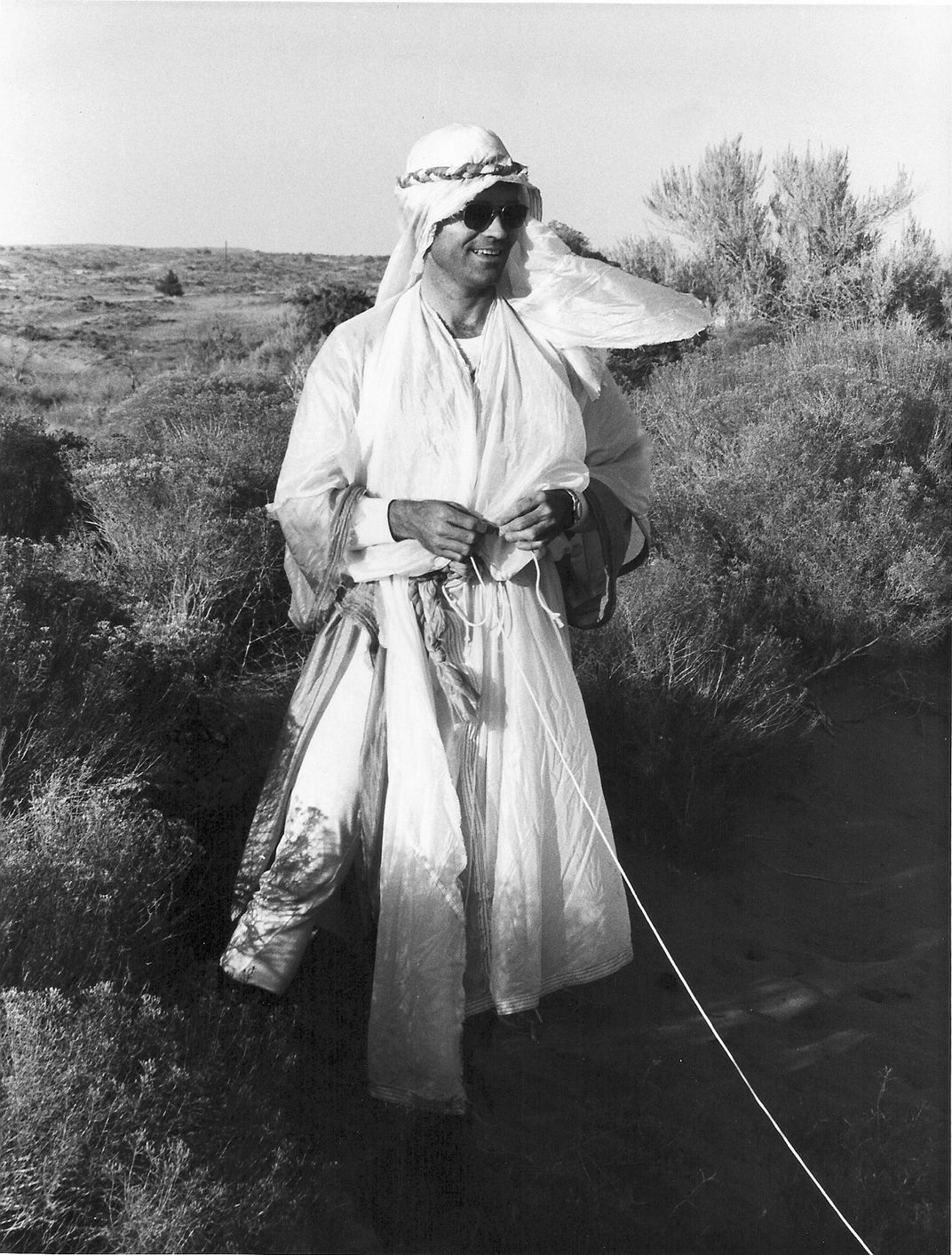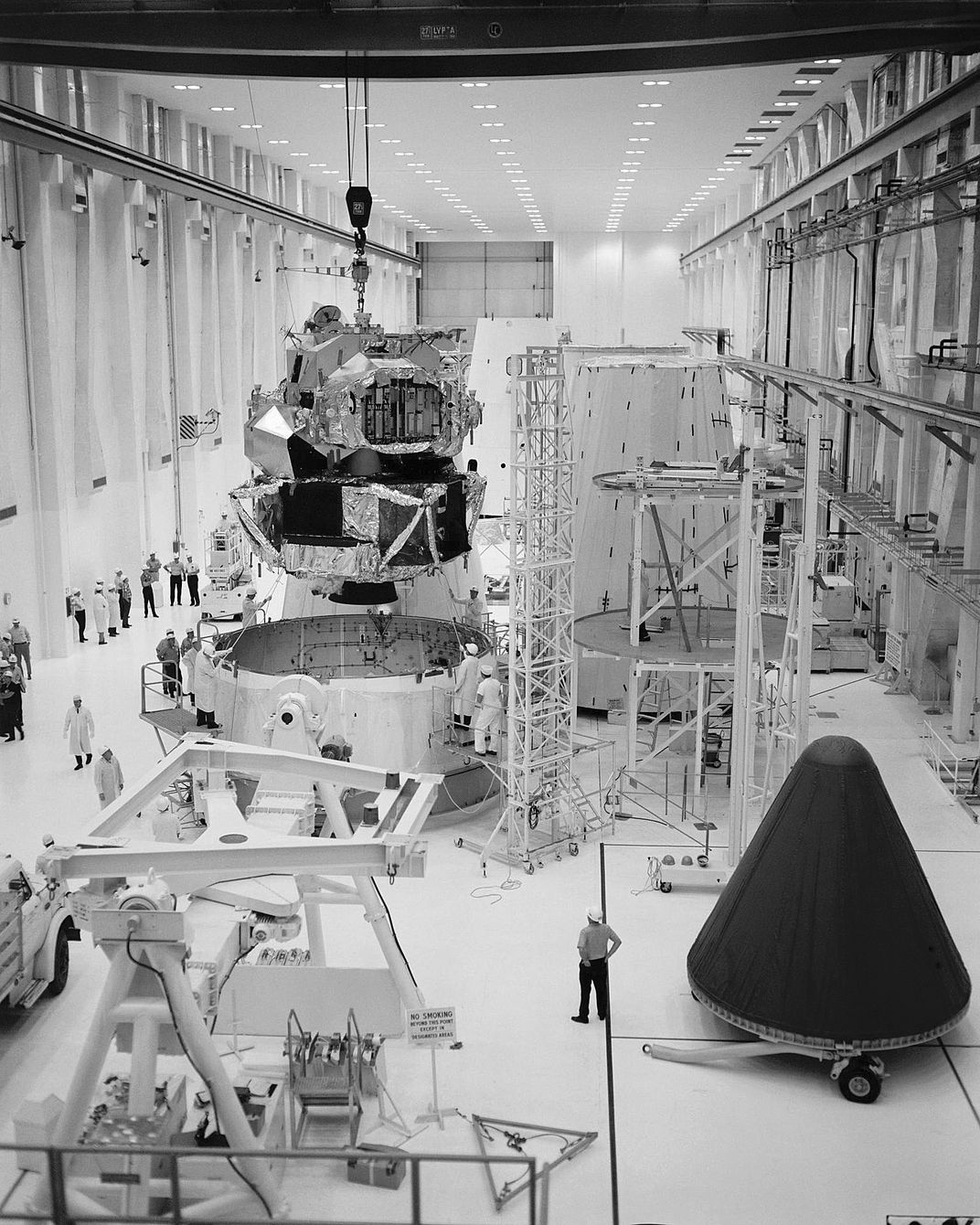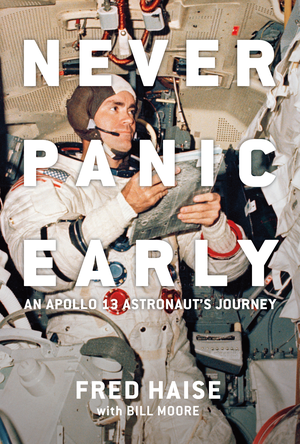Apollo 13 Astronaut Reflects on Early NASA Days
Experience NASA’s astronaut training program in this excerpt from Fred Haise’s autobiography “Never Panic Early.”
:focal(414x321:415x322)/https://tf-cmsv2-smithsonianmag-media.s3.amazonaws.com/filer_public/57/9a/579a90e9-3145-4bba-9aac-80bed161be55/fred1.jpg)
Our first geology training in the field took place at the Grand Canyon. Each trip was led by an instructor who had extensive knowledge on the area being visited and could cite major features. The various rock formations gave me an instant perception of geological time, versus the concept of great distance that astronomy offered. The present day layer that I saw at the rim of the Grand Canyon, all the way to the bottom layer on the canyon floor, represented more than a billion years. It was hard to conceive that the two large limestone beds we were clambering around on had once been under large inland seas. The thick Coconino Sandstone layer were remnants of the sand dunes that rival the Sahara Desert and extend across four states.
Other field trips exposed us to fumaroles and ash flow at the Valley of Ten Thousand Smokes within Katmai National Park in Alaska. One of the volcanos in the area emitted a small amount of white smoke. We also visited a lake adjacent to a forest ranger camp. While there, we were offered an opportunity to fish. The ranger warned us to whistle or sing while on our short hike, to make sure that the Kodiak bears knew of our presence. Charlie Duke, Paul Weitz, and I donned waders for the cool water to fish for trout, but the dying salmon, near the end of their spawning run upriver, got in the way with inadvertent hooking. Charlie and I were on one side of the river and Paul was on the other, when we saw a huge Kodiak bear part the branches behind Paul and scoop a huge salmon out of the river to eat like a lollipop. Following the ranger’s advice, Paul bellowed out in his deep voice, “Hey bear!” The bear reared up and let out a ferocious roar. Paul literally walked on water and made it to our side of the river, even with his waders full of cold water. He reasoned that the bear could only attack one person at a time, so he crossed the river to join us. The Original 19 almost became the Original 18.
We then went to Iceland, which was the first place I witnessed the sun not setting fully, leaving the sky twilight at midnight. In addition to viewing other volcanos and igneous rocks, we saw a glacier, which was an incredible sight.
On the big island of Hawaii, many of our survey and sampling exercises were done in the saddle between Mauna Loa and Mauna Kea. Since we were staying at a small Army camp near the volcanos, Jim Irwin convinced the Army to open their theater for one night of entertainment. We suffered through a private showing of the Italian film, Revenge of the Gladiators. Some of us visited a prison camp on the Hilo side of the Big Island, which was arranged by local officials. We gave a brief talk about our Apollo Mission and why we were training in Hawaii. For that, we each received a set of Monkey Pod wooden salad bowls that I enjoyed for many years.
The Original 19 went on ten geology field trips to sites that included volcanic areas such as Bend, Oregon. That’s where we witnessed an obsidian flow, which is made when lava cools so rapidly that the formation resembles glass, as opposed to a crystal structure that results from slower-moving lava. We had to wear gloves and be very careful climbing around on that terrain so as not to cut ourselves. Other exercises took place at Valles Caldera near Los Alamos, Arizona, and cinder-cone areas in Flagstaff, Arizona, and Medicine Lake, California.
We were given several days of briefings about the command and service module (CSM) and LM that all of us hoped to fly. NASA educators created a viewgraph show that featured simple schematics of the various systems in the spacecraft.
Because of a potential abort from orbit, we received survival training in the desert area of Washington state and jungle survival in Panama. We were also trained to survive in water. Desert survival training was the worst, because it involved sitting around most of the day while minimizing conversation, because talking causes a loss of moisture. Most lessons about shelters and creating devices in the ground to capture dew moisture took place after dark.In each exercise, we were grouped in threes, just as we would be in a capsule crew. Water survival involved, as it had in my pilot training, the Dilbert Dunker at NAS Pensacola. It also entailed deploying a small raft and learning to operate the signaling equipment. It was just my luck to be teamed up with John Bull and our group wanderer, Bruce McCandless, for jungle survival. Our training was run by the USAF at Howard AFB, with the support of Panamanian Guards. We flew by helicopters to our respective camp sites. Once there, the items that would be found in the capsule, plus one section of a parachute, which was used for hammocks to sleep in, were at our disposal. There is no shortage of water in the deep jungle. It rained almost all day and night, with only a few hours free of rain at night. Everything stayed wet. Starting a fire with the small book of paper matches or the flint and cotton provided in the survival kit was impossible. A guard came by once a day to check on our condition, and when we complained about the wood being too wet for a fire, he offered to help: After piling up some of the wet wood, he pulled out a flare to ignite and stuck it under the wood. Pretty soon, water bubbled out of the wood and we had a fire. From then on, our crew of three had to add fresh wood around the clock.

Naively, I expected there to be an abundance of animal life that we might capture with a snare or kill with our machete, but I quickly realized that most animals lived in the overhead vegetation that obscured the sky. We could hear them above us. We ate hearts of palm that we cut from small trees. By the third day, we enjoyed a stew of bugs and small minnow-size fish. A survival rule is that if you boil things long enough, you don’t have to worry about bacteria.
Of course Bruce strayed off, seeking birds and other critters. At dusk, John wanted to go hunt for our fellow crewman, but I convinced him that we would soon all be lost trying to find Bruce. I thought the best solution was to blow the whistle from our survival kit every fifteen minutes, so Bruce would be able to find his way back to our encampment. He eventually showed up empty handed.
After five days, the guard came to lead us out. He took us down to a river to the small raft that was included in the capsule-survival equipment. We were to ride the raft to a village down the river, but on the walk down the trail to the water, Bruce spotted a snake. Not just any snake, but a fer-de-lance, a highly venomous pit viper. Bruce thought it would be great to capture it and take it back to present to the Houston Zoo. Who else but Bruce would know that this snake was one type that the zoo did not possess? This was the most dangerous snake in Central America, and without prompt treatment after a bite, one could die. One of the Panamanian guards and a NASA doctor caught it by putting a gunny sack over its head. I think the doctor volunteered because he worried that the loss of an astronaut on his watch would not look good on his record, but Bruce insisted that he personally take it down the river. Others from our group looked at us smiling as we got ready to board our raft. They saw this as an opportunity for the Original 19, who were competing for a mission, to be significantly reduced by the bite of a snake. John Bull and I decided to ride outside, holding on to rope attached to the raft. We even faced a small set of rapids, but preferred splashing through them over being bitten by a poisonous snake. I paid close attention, just in case the raft capsized—I wanted to clear the way for Bruce and his “little pet.” The snake made it to Houston and Bruce happily presented it to the zoo.
At the village, we communicated with rudimentary hand signals and were served some of the indigenous people’s delicacies—iguana, boa constrictor, and a brown field rodent. The latter, which could have been a cousin of our Nutria in the US, tasted the best. In a show of appreciation to the chief for his tribe’s support, we invited him to see a Saturn V launch several years later. The chief was impressed by the noise and fire, but was more impressed when he rode in an elevator at NASA’s headquarters in Washington. He was amazed to see the doors close, then open up at a different scene, as if by magic. It seemed that this was his “Beam me up, Scotty” moment.
Six months had passed and our rookie training was over. Alan Shepard, chief of the Astronaut Office and America’s first man in space, released a memo detailing our assignments. I was happy to know that I would be reporting to the LM/Lunar Landing Research Vehicle/Lunar Landing Research Facility branch headed by Neil Armstrong. It was encouraging to be part of the LM Development Program, because it was the vehicle that would land on the Moon. I was further encouraged to find out that I was one of ten members of the Original 19 who was chosen to receive helicopter training. The training was a short course conducted at NAS Ellison Field in Pensacola, Florida. Normally, the Navy helicopter training course was one year, but I flew an abbreviated twenty-one flights in the Bell TH-13M over eleven days with Marine Corps instructor Capt. Muyskens. I flew a little time in the NASA Flight Research Center Bell 13 with Don Mallick and Bruce Peterson coaching, where I had to learn to accommodate the relatively light control forces of the helicopter compared with any normal airplane. I also had to adjust to the requirement for left rudder input when increasing power to offset torque versus right rudder in a reciprocating engine winged aircraft. But in that short amount of time and flight hours, I had mastered hovering, auto rotations, and got to enjoy four solo flights. In addition to checkout flights in the NASA OH-13H at Ellington Field with other NASA pilots, I continued with helicopter proficiency flights throughout the Apollo program.
In December, crew assignments for Apollo 1 and Apollo 2 were announced. Ed Mitchell and I were assigned to Apollo 2 as support crew. Jim McDivitt was our commander for LM testing support. Ed and I reported to Jim’s office to get our marching orders. We were raring to go. He simply told us, “I want you to go to Grumman and make sure that I have a good LM to fly!” Dave Ballard, an excellent NASA system engineer, worked with Ed and me over many days and nights ahead at Grumman. He did a tremendous job. His understanding of the vehicle problems resulted in outstanding follow-up solutions, and he coauthored most of our status report memos to Jim McDivitt.
Ed and I made our first cross-country flight to check out the Grumman LM Operations on October 9, 1966. There were many places to land in New York in order to access the Grumman plant on Long Island. Despite the fact that the runway was only 6,000 feet long—marginal for the T-38A aircraft, but suitable for the T-33A—I chose the airfield at Bethpage, because it was nestled within the primary Grumman Plant. From where I parked the aircraft, it was walking distance to Plant 3 or 25, where most of our time was spent in LM preparation. Ed landed at Calverton most of the time. On the other hand, Ed chose the T-38A, which had a shorter flight time, but then he had to arrange an auto ride to Bethpage from the Calverton airfield.Grumman arranged a trailer for us to use that was a short walk to the Plant 3 high-bay clean room. The high bay is a room that is approximately three stories tall. The clean room helped prevent contamination of the vehicle electronics, as well as to avoid the deposit of debris in zero G. At the highbay entry, we walked across a sticky pad on the floor that removed dirt from our shoes. Then we passed through a blower to remove dust particles, after which we donned a white coverall, white shoe coverings, white gloves, and a white head covering.

The first day I entered the cavernous Plant 5 high-bay area it reminded me of when The Wizard of Oz changes from black and white to color. The scene in Plant 5 was just that vivid. People scurried around the facility dressed in white, clean-room garments, with an urgency—there was a schedule to meet so the US would be the first nation to land on the Moon.
Never Panic Early is available from Smithsonian Books. Visit Smithsonian Books’ website to learn more about its publications and a full list of titles.
Excerpt from Never Panic Early: An Apollo 13 Astronaut's Journey © 2022 by Fred Haise

